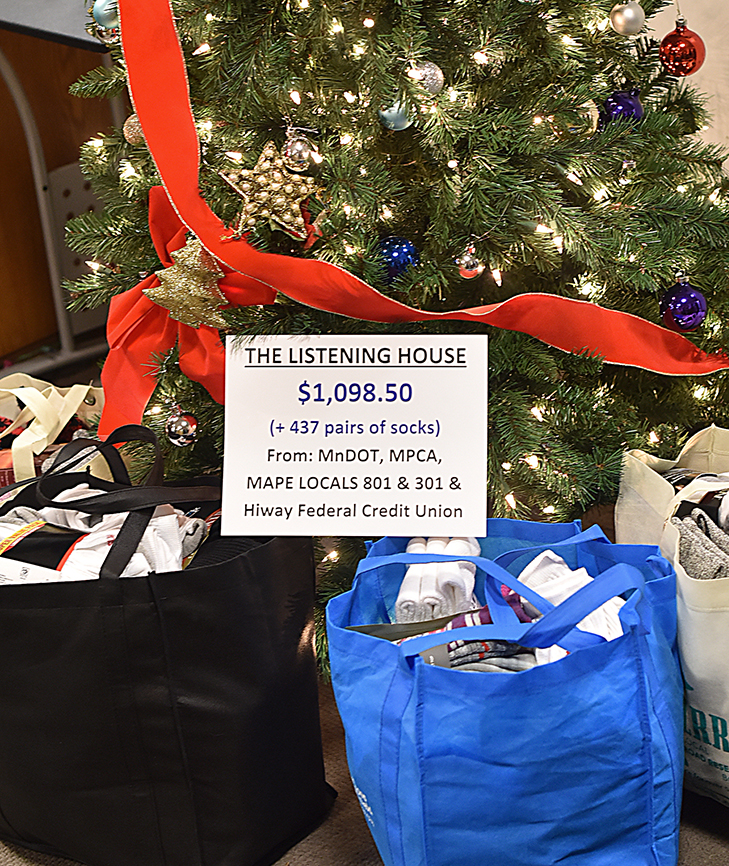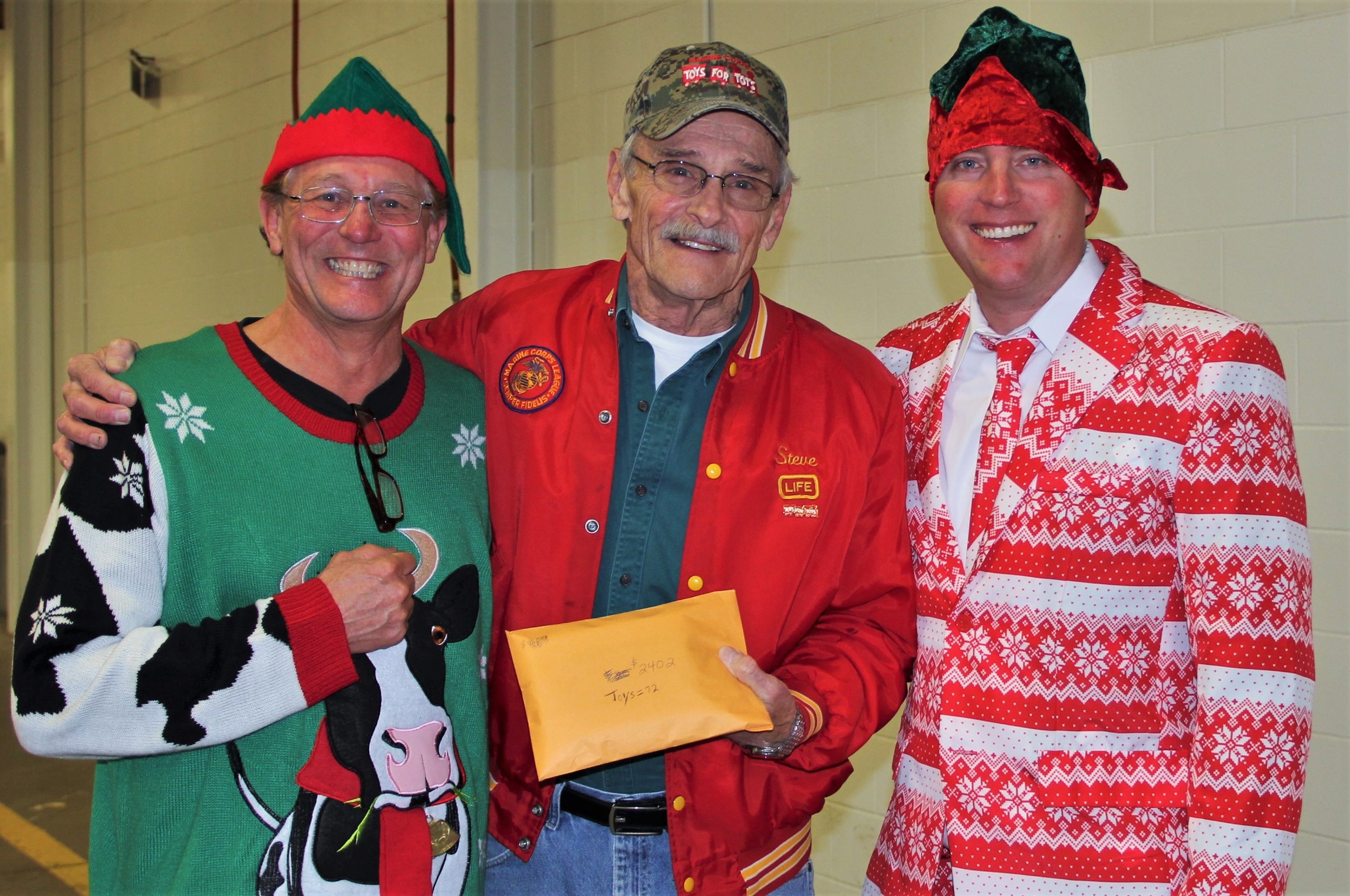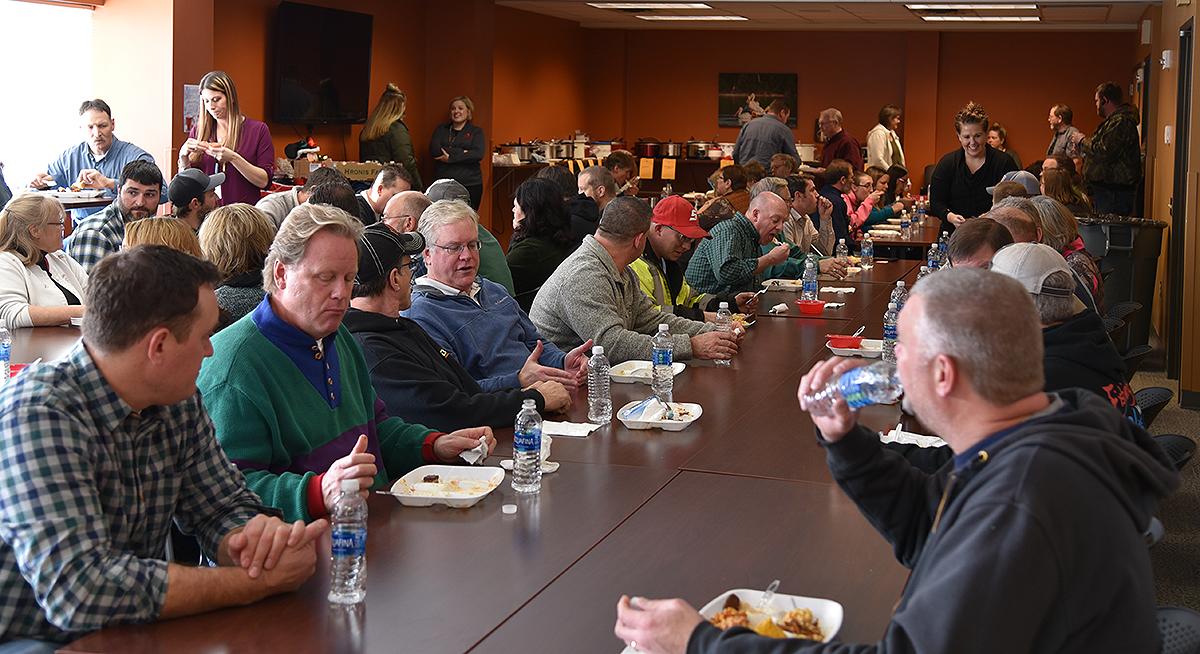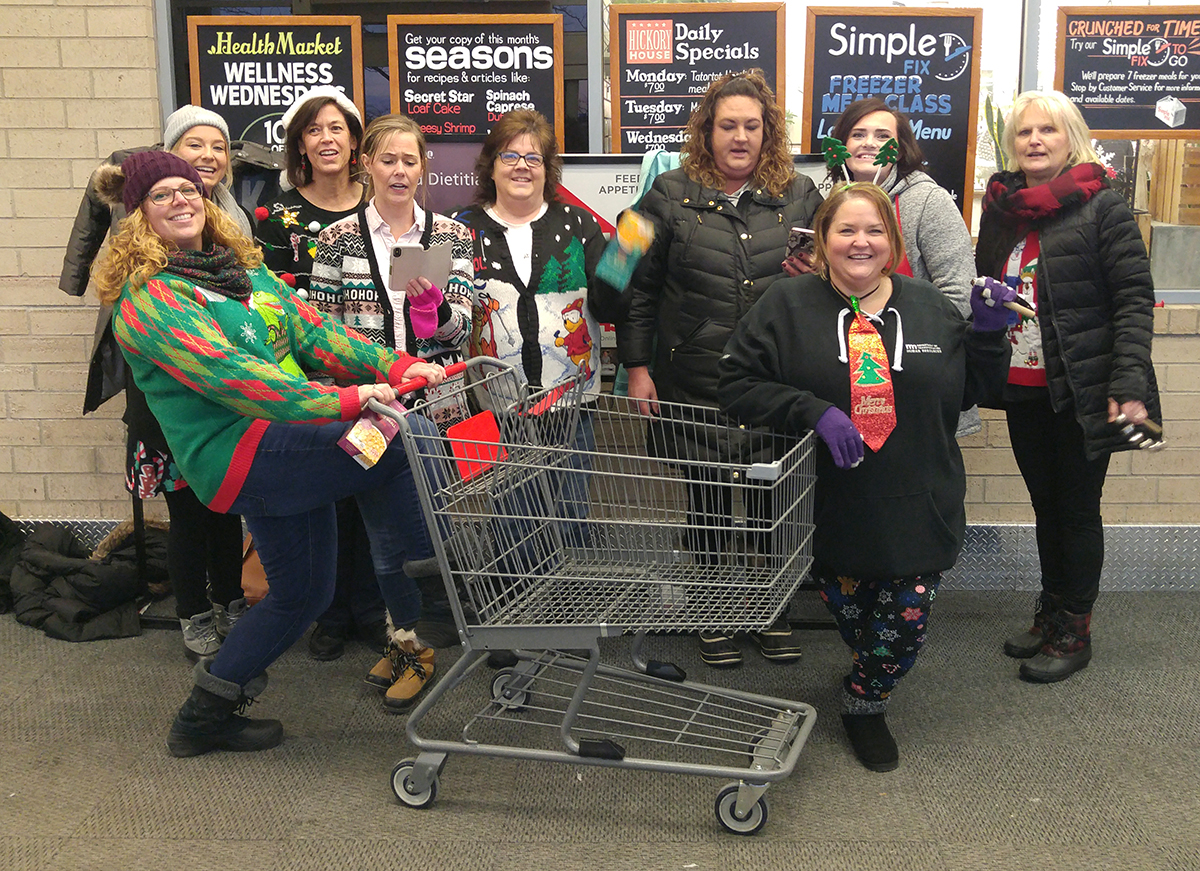By Joseph Palmersheim The holidays annually provide an opportunity for MnDOT employees to show their true colors by helping those in need. Here are a few recent highlights:

Staff from MnDOT, MPCA, MAPE Locals 801 and 301, and the Hiway Federal Credit Union partnered this holiday season to raise $1,098 and collect 437 pairs of socks for the Listening House, a day shelter and community center. Photo by Rich Kemp |
Central Office:
Staff from MnDOT, MPCA, MAPE Locals 801 and 301, and the Hiway Federal Credit Union partnered this holiday season to raise $1,098 and collect 437 pairs of socks for the Listening House, a day shelter and community center providing hospitality, practical assistance and guidance to men and women who are disadvantaged, homeless or lonely.
“Every year, MnDOT and MAPE Local 801 choose a local nonprofit to focus our fundraising efforts,” said co-organizer Cheryl Hunstock, training coordinator, Office of Land Management. “So often state employees and union members are seen negatively in the press. Sometimes we are seen as only out for ourselves at the taxpayers’ expense. Well, each year we like to show that we are not like that. We care about our community and want to give back.”
Hunstock said The Listening House was “blown away by our donations.” Hunstock, along with fellow event organizers Nancy Stone (State Aid) and Mark Snyder (Resource Management and Assistance) delivered the donations on Dec. 13.
“They were very appreciative,” she said. “Their reaction was gratifying. I feel like we really contributed in a way that they can then help people that really need help.”
District 1
District 1 held a toy drive for the Salvation Army, collecting 25 toys and $60 in cash.
District 2
Spearheaded by Staci Cann, transportation program specialist, employees donated $1,169 to the silent auction/potluck in honor of a retired district employee whose grandson is battling cancer. Also, a stocking was hung and district employees donated gift cards, cash and gas cards for another district employee whose granddaughter is battling cancer. The stocking raised $335.
District employees held four events throughout 2019 to help co-workers during difficult times. Joe McKinnon, engineer administrative, also spearheaded the combined charity campaign, which donated money to the Bemidji High School food shelf.
Together, district employees raised a total of $6,311.

District 3B employees donated 72 toys at a Toys for Tots holiday lunch fundraiser. From left are Mark Renn, roadway regulations supervisor engineering specialist; retired Marine Steve Titus, St. Cloud Marine Toys for Tots; and Mike Kiley, granite sub area supervisor. Photo by Kristy Barhorst |
District 3
District 3B employees in St. Cloud raised $2,402. This included a $300 donation from the AFSCME union. Employees also donated 72 toys at a Toys for Tots holiday lunch fundraiser. The donations were accepted by retired Marine Steve Titus, Toys for Tots. He has accepted donations at the St. Cloud event for the past 13 years.
District 3A employees in Baxter raised $1,042, which also included a $200 donation from the AFSCME union and received 25 gifts to be donated at a holiday potluck lunch for Toys for Kids. The donations were accepted by the Marine Corps League.

Employees from MnDOT District 4, Driver and Vehicle Services and State Patrol in Detroit Lakes gathered Dec. 10 for the 25th Annual Charity Potluck. Photo by Bryan Christensen |
District 4
Employees from MnDOT, Driver and Vehicle Services and State Patrol in Detroit Lakes joined forces Dec. 10 for the 25th Annual Charity Potluck to raise money for Hospice of the Red River Valley, complete with a hotdish cook-off and charity drawing. They raised $2,000, bringing total donations since 1995 to $36,057.
District 6
MnDOT and State Patrol employees teamed up during the holiday season to support Toys for Tots. Employees donated $800 and filled two bins with toys at the Rochester headquarters. Each year, Marnie Krohse, accounting technician, works with volunteers of Toys for Tots to make the drive happen at District 6. MnDOT and State Patrol employees also hosted a toy drive at an old MnDOT weigh scale near Winona Dec. 14. Members of the public helped fill a plow and a squad car with toys.
Overall, 18,936 toys were distributed to 7,804 children during 2019 in southeast Minnesota because of Toys for Tots.

District 7 employees helped with bell ringing at a local Hy-Vee Dec. 14. From left are Kristin Underwood, training; Macy Wagner, human resources; Tami Bergemann, business manager; Beck Albrecht, safety; Wendy Jones, receptionist; Jill Brandt, human resources; Jenn Worthington, human resources; Haley Eustace, safety, and LaVonne Nicolai, human resources: Photo by Greg Ous. |
District 7
District 7’s Human Resources and Safety Team helped with bell-ringing efforts at a local Hy-Vee Dec. 14. They raised $350 during the two hours.
“Apparently, the Salvation Army site says that the kettle raises on average $30 per hour in their kettles,” a participant noted. “Our musical talents must have helped.”
The District 7 Mankato Headquarters also participates in the State Patrol District 2200’s Toys for Tots.
Finally, the second annual Echo Food Drive Competition started Jan. 6 and runs to Jan. 30.
|



